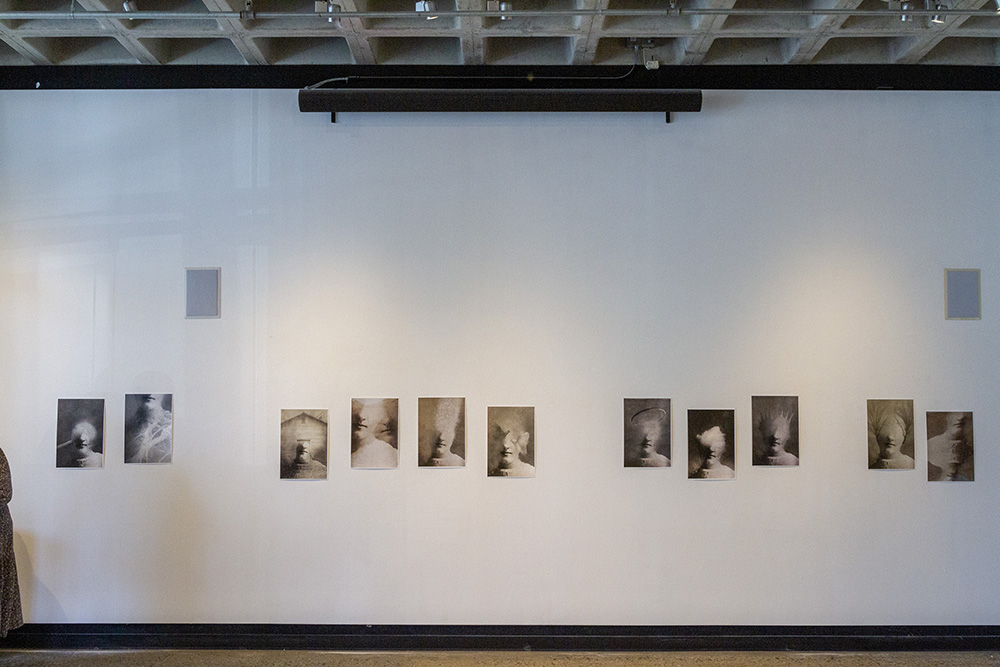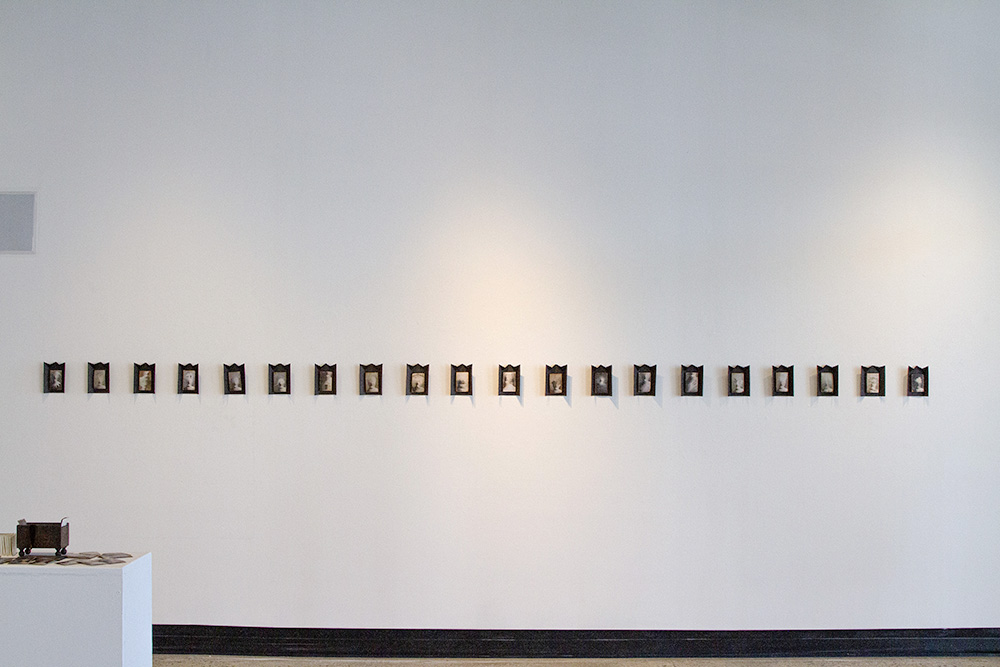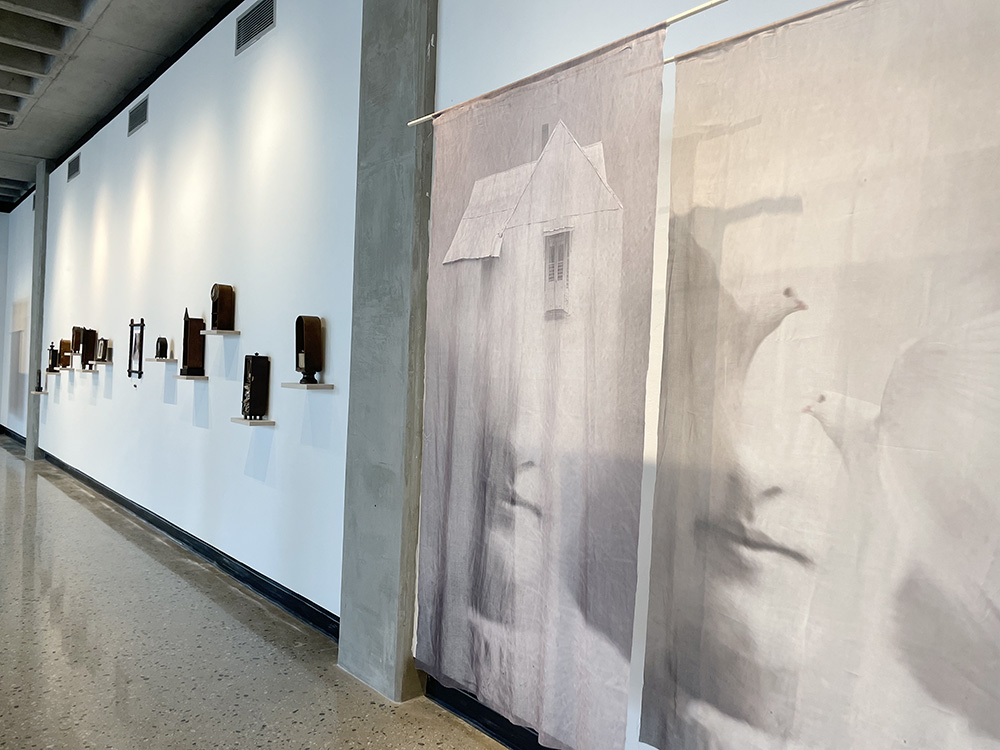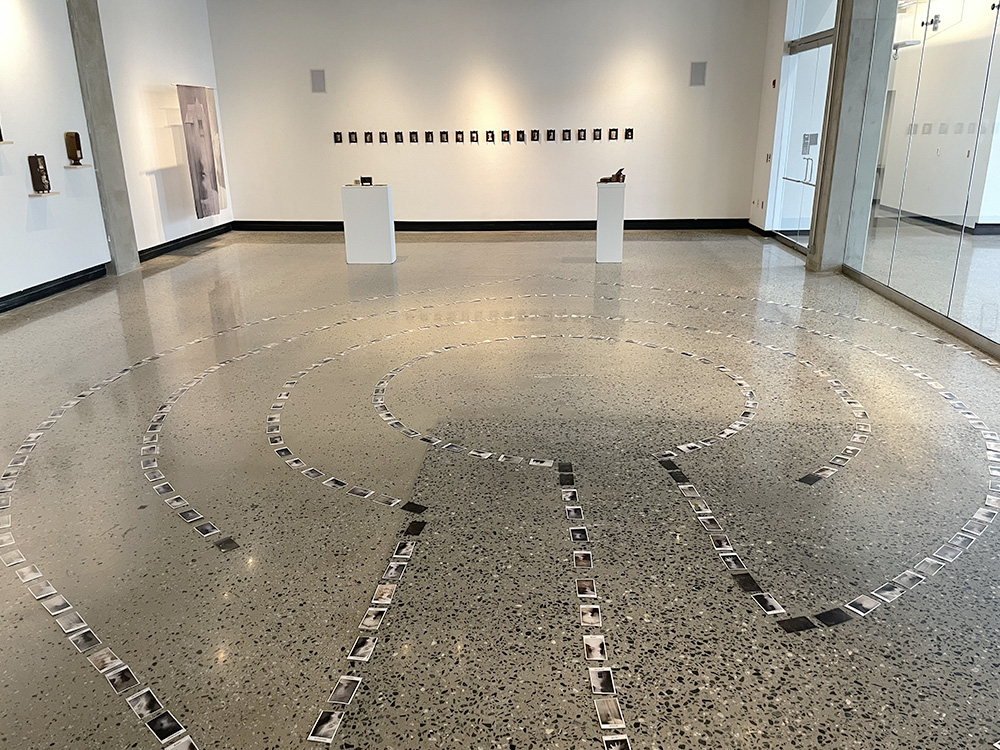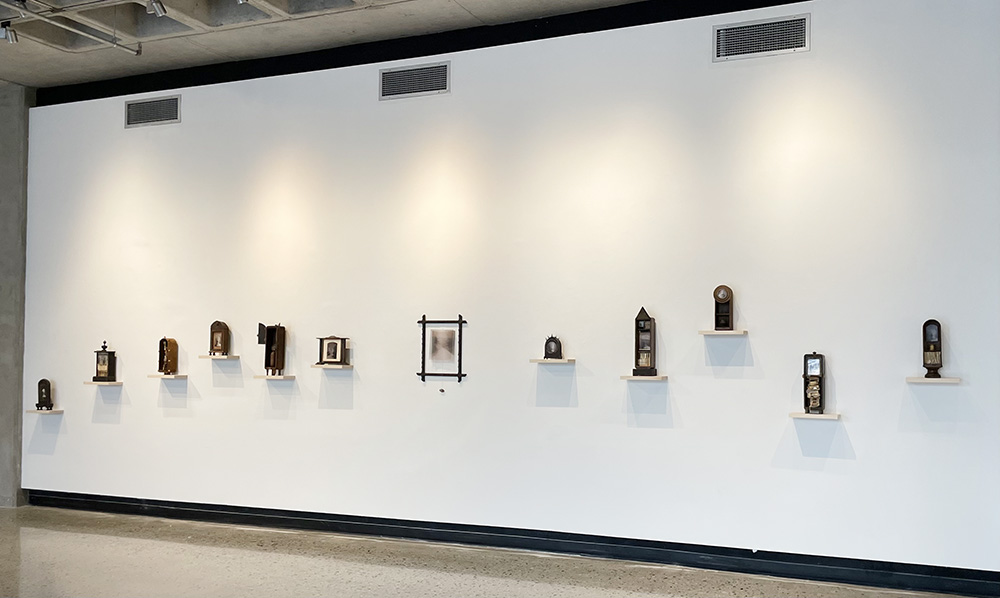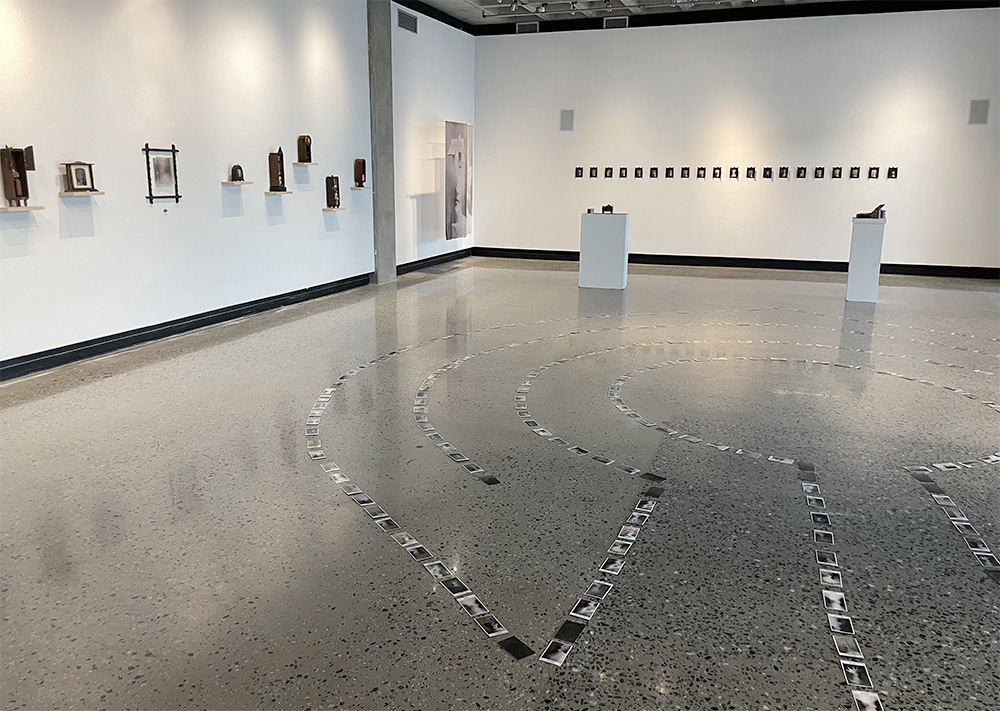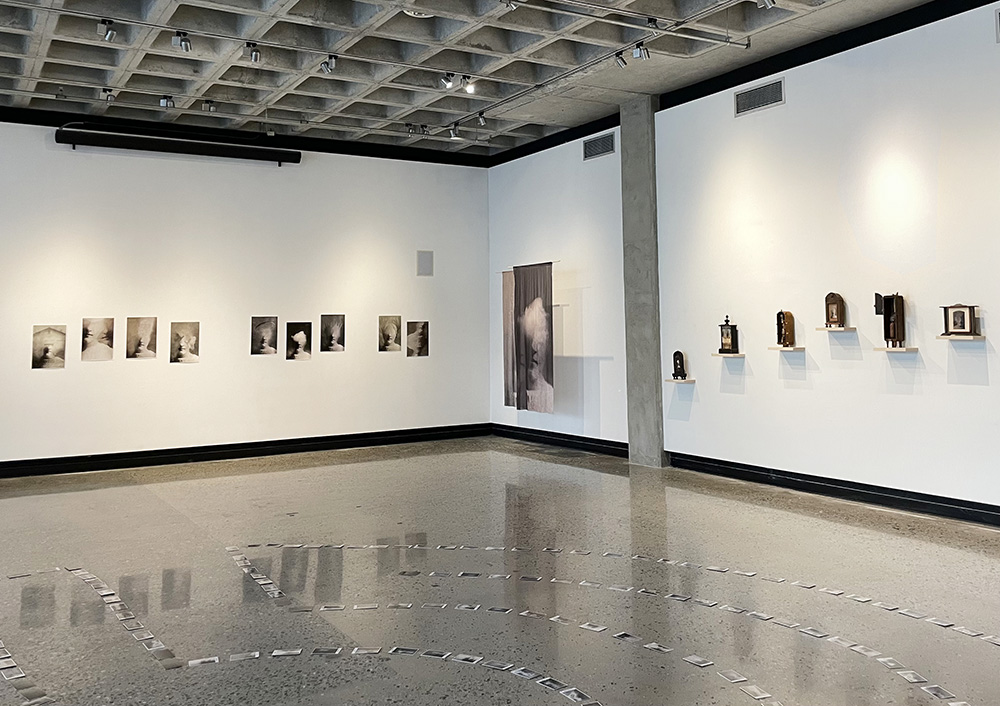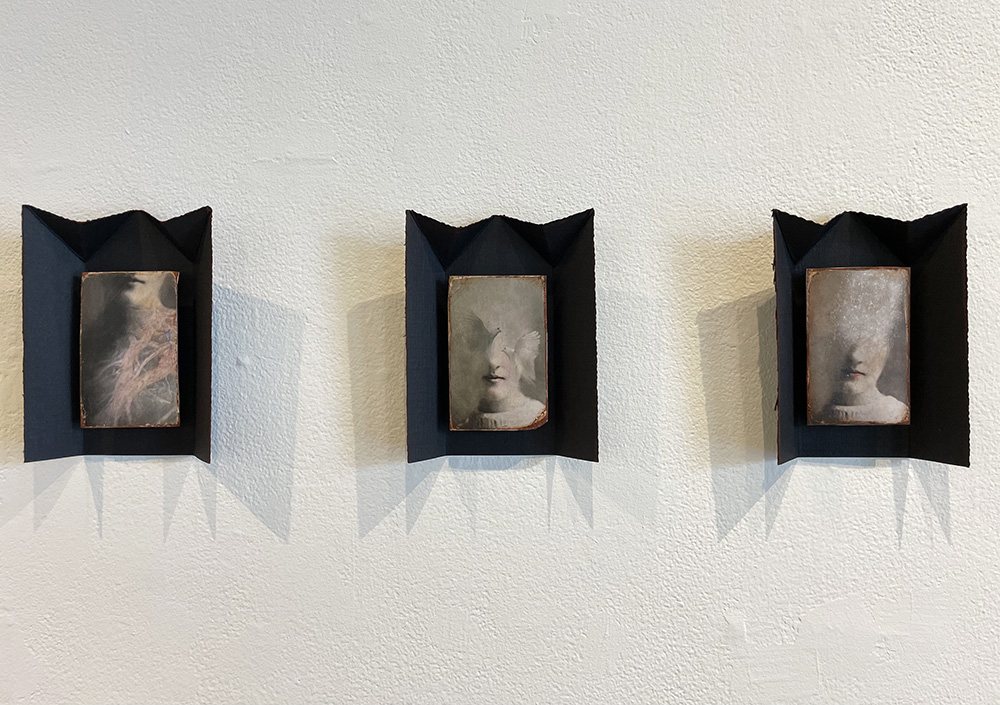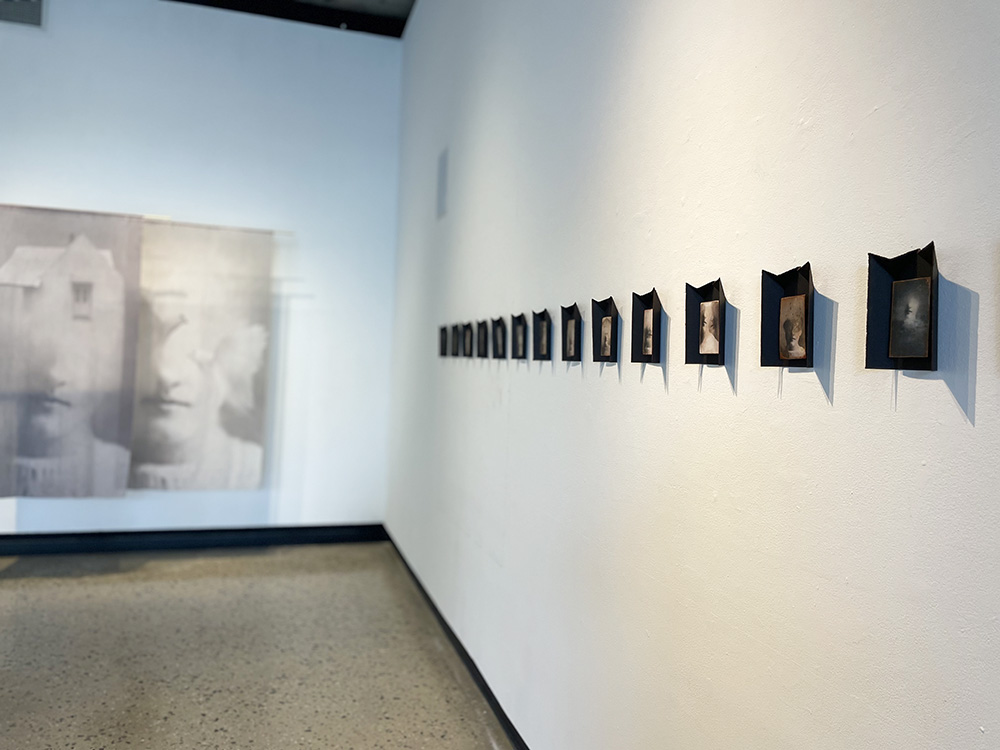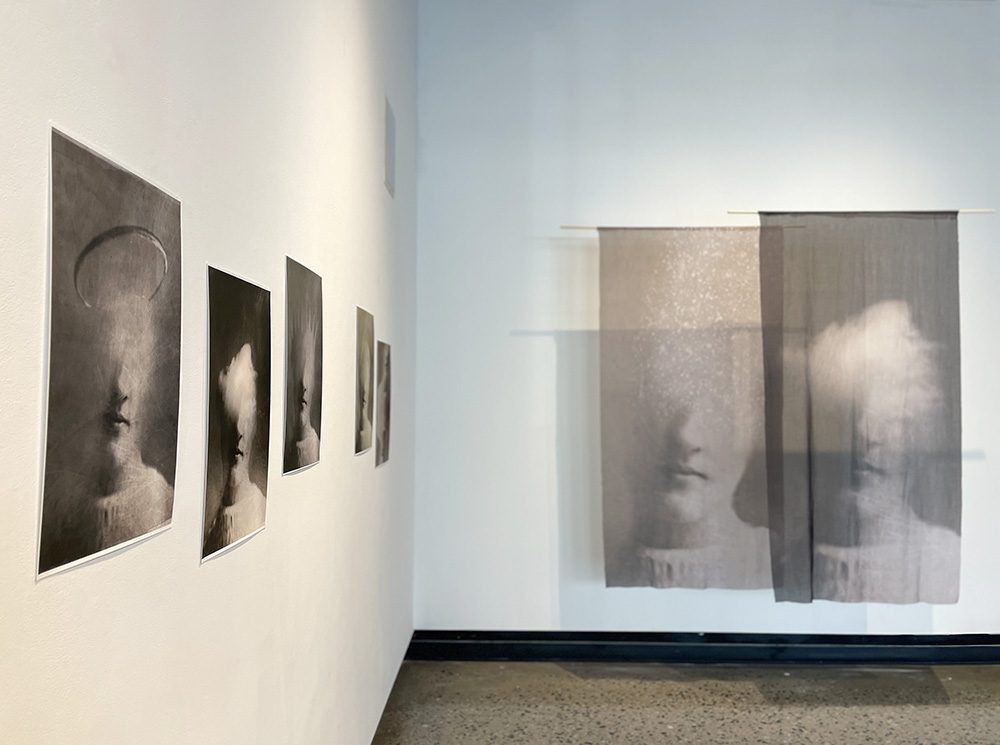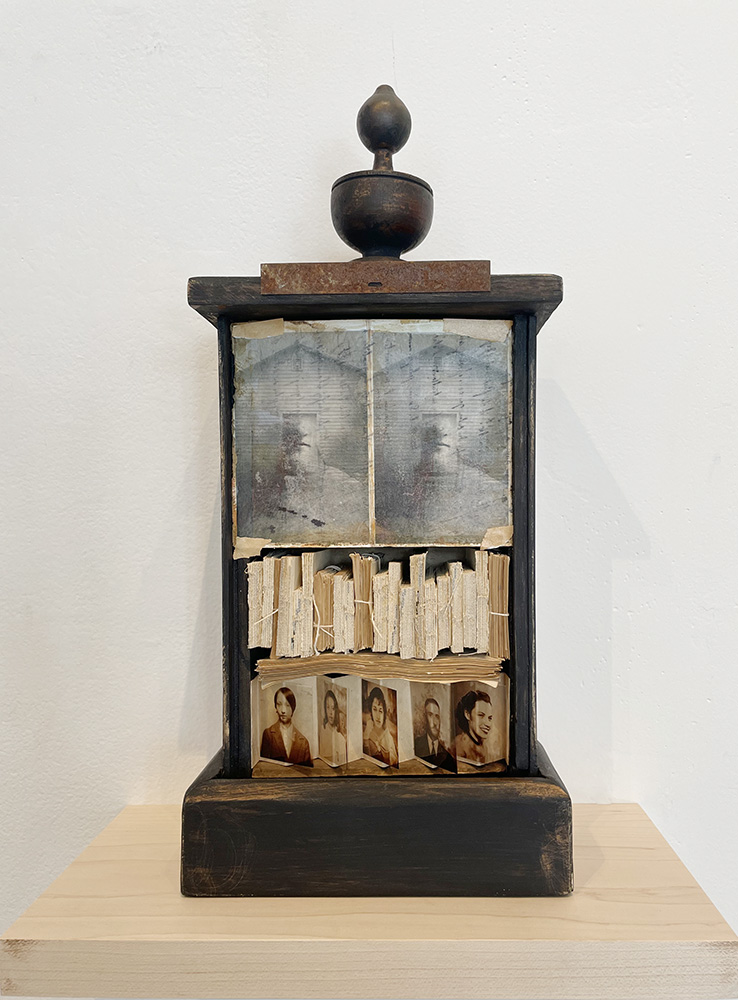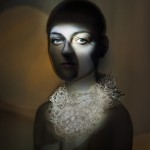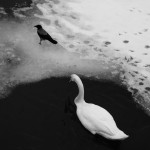Dawn Surratt: The Rock In The Storm
My imagery is emotionally charged and it is deeply influenced by the work of pictorialist and non-traditional photographers. I seek to bridge the viewer to quiet, internal dialogues through the use of digital manipulation and non-traditional camera lenses to create moody and painterly like images. I create in smaller scale to enhance a feeling of intimacy in my work but in the past two years, I have been incorporating my imagery in site specific, large scale installations as a way of exploring and creating intimate spaces and allowing for visual meditations. I am currently exploring the energy of objects and how their tangibility can connect us to memory and emotion. Through the use of mediums such as silk, alternative substrates, wax and ephemera, I have been creating photography transfers and one of a kind objects and book structures. – Dawn Surratt
Dawn Surratt earned a B.A. in Studio Arts from the University of North Carolina in Greensboro and a Bachelor and Master’s Degree in Social Work from the University of Georgia. Her years of work with dying patients in hospice settings is the backbone of her imagery combining photographs with photography based book structures, installations, and objects as visual meditations exploring concepts of grief, transition, healing and spirituality.
Her work has been widely published for book covers and publications such as Time, Bloomberg Business Week, Lenscratch, SHOTS, Diffusion and The Hand. She has exhibited in galleries across the United States including The Center for Fine Art Photography, Southeast Center for Photography, A.Smith Gallery, Photoplace Gallery and the Griffin Museum of Photography. She was a 2016 and 2020 Critical Mass Finalist and her work is in collections across the United States including the Peabody Essex Museum and the Rubinstein Library at Duke University, Archive of Documentary Arts. She is a 2018 nominee for the Royal Photography Society’s 100 Heroines.
Dawn is a full time artist living in rural North Carolina and teaches multi-media process and photography object work through Maine Media Workshops and College.
Follow Dawn Surrat on Instagram @Dawn_Surratt
GB: Tell us a little bit about your childhood and how you became an artist?
DS: Growing up in a creative household, I was always exposed to art and music and can’t remember a time when I didn’t really love art. But when I was in maybe second or third grade, my mother enrolled my brother in private art lessons instead of me. I begged to take lessons too, but she wouldn’t let me because she felt my brother was the one with the artistic talent. So I guess you could say I became an artist out of spite.
GB: Talk about the use of one found or appropriated image throughout the series and why you chose to work in that direction?
DS: I honestly can’t remember where I found that image but there was something about her that spoke to me. When I started combining her with my own images, a rhythm emerged. The emphasis became more about the inner psychological states and the internal processes of transitioning. The repetition of one face became a visual bookmark from which to anchor to.
GB: How did the pandemic play a role in the series?
DS: I turned to my relationship with art as I’ve done in other uncertain and challenging times throughout my life, to express my emotions and manage my anxiety. It almost felt like I was possessed creating that work…it came from another place. I didn’t plan it or really even guide it, it just seemed to flow through me.
GB: I am interested in why you decided to integrate a series you made during the pandemic the Silent Years into a new series the Rock in the Storm instead of just making new images?
DS: I’ve never shown my work from The Silent Year before, so it was work that I felt deserved a chance. It was made during the pandemic and didn’t have a way to show it until now. But, as with every image we make, they change and grow over time and my relationship to that imagery has expanded into more than it was when I first made it. I wanted to use the imagery from The Silent Year, but also wanted to expand on it. It’s in retrospect that I was able to understand how much the repetition of making that project helped to ground me during a challenging time hence the name, The Rock In The Storm. In thinking about this installation, I felt that using a variety of mediums would infuse it with energy and activate the emotionality of it in different ways. The ideas of connection, ritual and spirituality were primary in my mind as I began to think about building out the space. The assemblages are a nod to the Stations of the Cross and the altar spaces of the Catholic church that I grew up in, the labyrinth is an invitation to connect to ourselves in an active but meditative way, the introduction of color in the images housed in the reliquary folded shrines, energizes the archetypes in bolder, more complex ways.
GB: Talk about your process, when I first met you I thought of you as a creative landscape photographer and then I saw some abstract portraits and then it felt like out of nowhere came assemblage.
DS: I can totally understand how it might have seemed like it was coming out of nowhere. All of those ways of working are important to me and each have their own voice. It’s a matter of which vehicle of expression serves the best to what i want to say. I am always experimenting…honing my artistic language…going back to my roots, allowing ways that i’ve worked in the past to come forward again and find their place. My education in studio art was a stew of learning many different mediums and even though photography is the main tool I use for making art, I have always loved combining it with other things and using my imagery as a flash point for collage, book structures, pottery, sculptures and transfers.
Follow Greg Banks on Instagram: @gregbanksphoto
Posts on Lenscratch may not be reproduced without the permission of the Lenscratch staff and the photographer.
Recommended
-
Ragne Kristine Sigmond: Portraits of Painterly LightDecember 2nd, 2025
-
Mary Pat Reeve: Illuminating the NightDecember 1st, 2025
-
Ricardo Miguel Hernández: When the memory turns to dust and Beyond PainNovember 28th, 2025
-
Pamela Landau Connolly: Columbus DriveNovember 26th, 2025
-
MATERNAL LEGACIES: OUR MOTHERS OURSELVES EXHIBITIONNovember 20th, 2025

